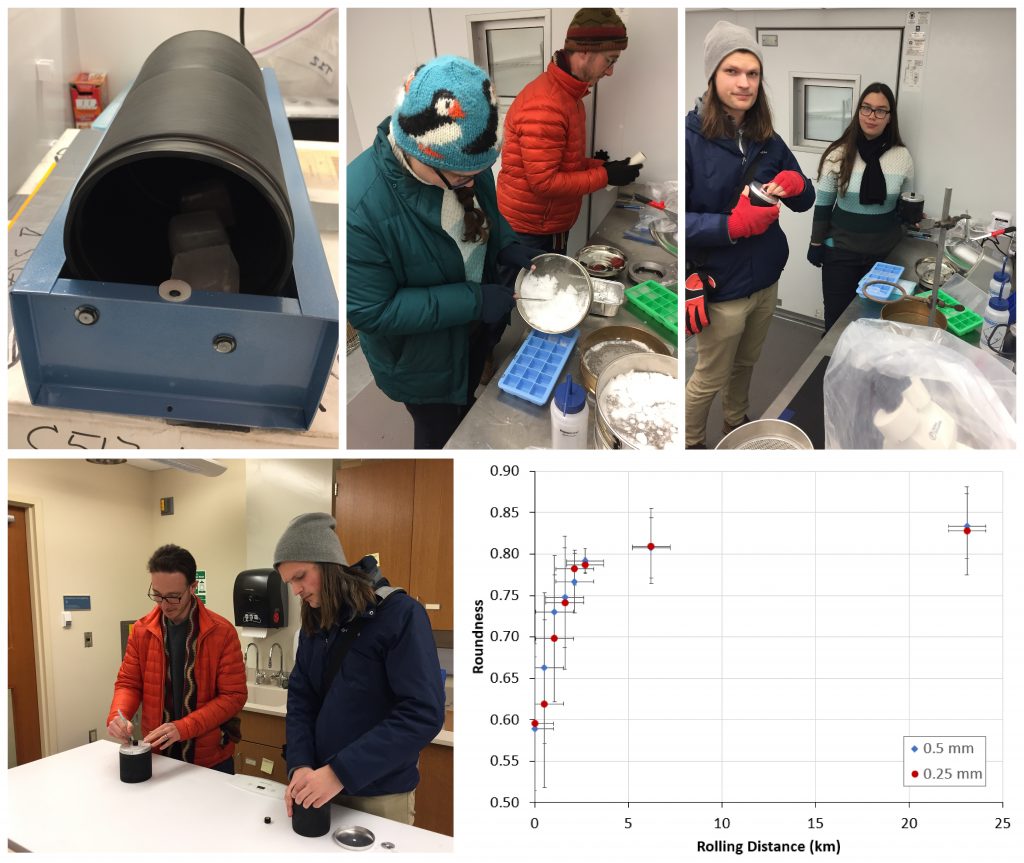In December, Devon and Tony made their first visit to Colgate University where collaborator Joe Levy and undergraduate Erica Nathan have been developing a cryogenic roller mill. Referred to as the Titan Tumbler, its present form consists of two 11-cm diameter barrels that roll 2-cm ice clasts in a -20 C chamber. A larger setup with capability for far cooler temperatures is currently in construction. Our hope is to replicate the weathering of icy cobbles on Titan as they’re transported downstream in Titan’s methane rivers. It is generally understood that on the Earth, sediment may round and comminute with distance downstream due to collisions between clasts and with the riverbed. We aim to understand how this process may occur on Titan, in part through replicating clast-clast interactions in the Titan Tumbler.
At this first visit, we tested variations due to both the number of clasts and the grain size that clasts are composed of. Input ice clasts are made to contain specific grain sizes by first shredding polycrystalline ice, sieving the resulting fines to the desired grain size, and refreezing these grains to produce a monocrystalline “sedimentary” ice, if you will. Initial findings, including results for a planned second visit, will be presented at the upcoming 49th Lunar and Planetary Science Conference (abstract #1113).
Some images and initial results are described below.

Above images from Cogate visit #1: (top left) the first Titan Tumbler with side opened to show ice clasts within, (top center) Joe and Erica working in the freezer room to create monocrystalline ice, (top right) Tony and Erica preparing the roller mill barrels, (bottom left) Joe and Tony prepping barrels for rolling, (bottom right) preliminary results of two different monocrystalline ice grain sizes showing roundness increasing with distance rolled, with the most dramatic change in the first few km.